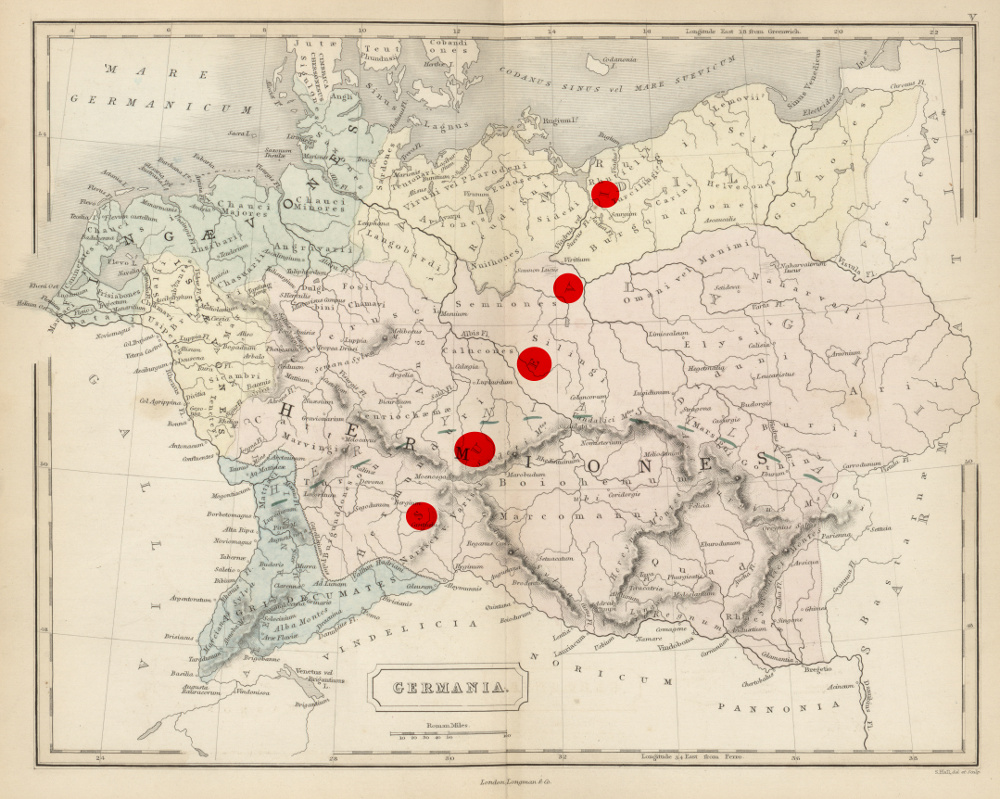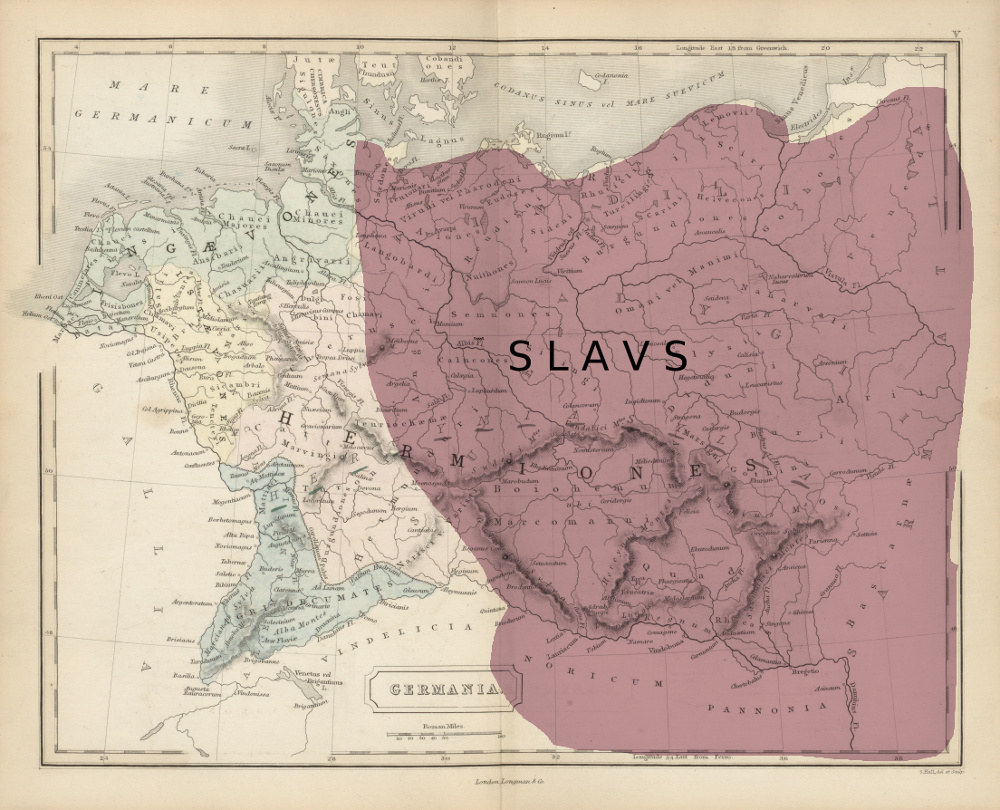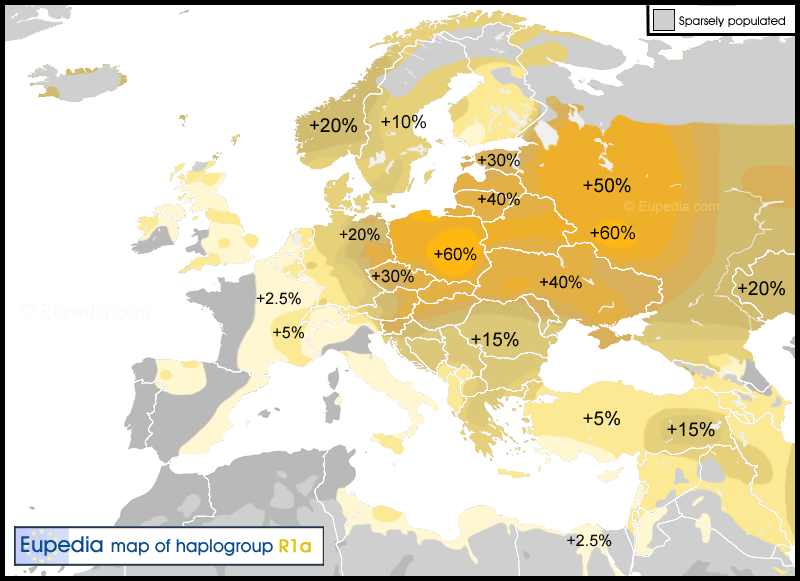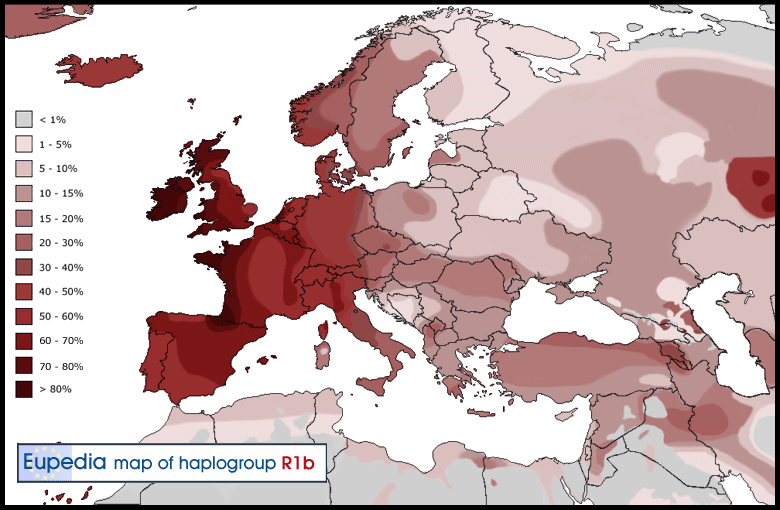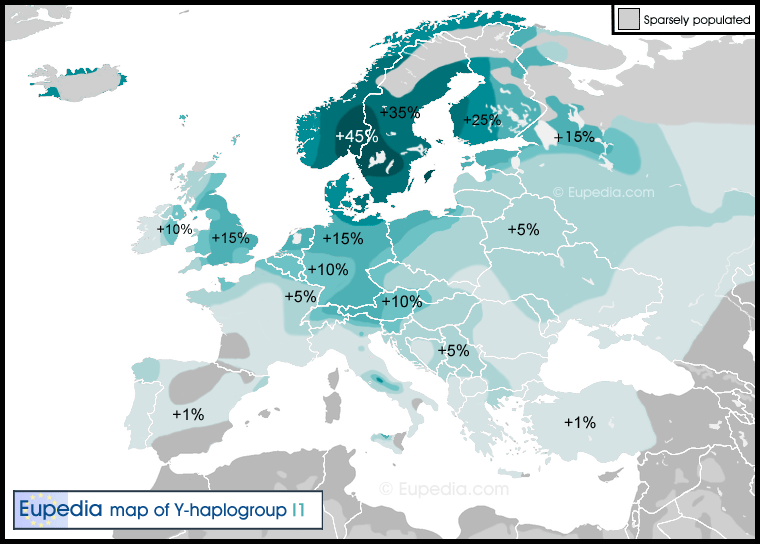The Genetic Legacy of the Germanic People
Pagina 1 din 1
 The Genetic Legacy of the Germanic People
The Genetic Legacy of the Germanic People
http://www.renegadetribune.com/genetic-legacy-germanic-people/
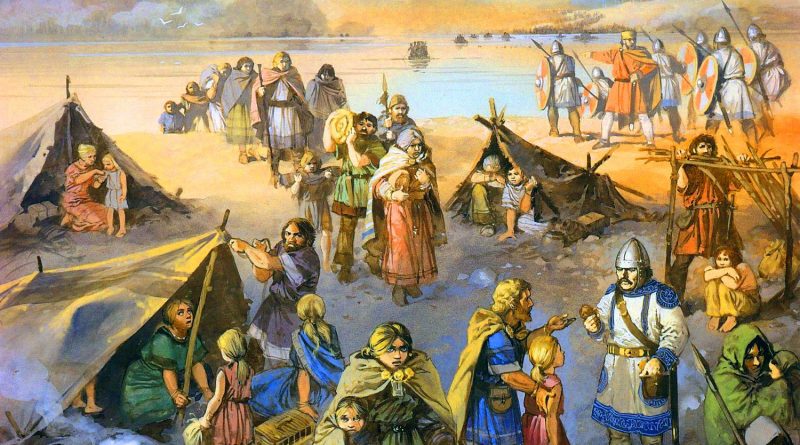
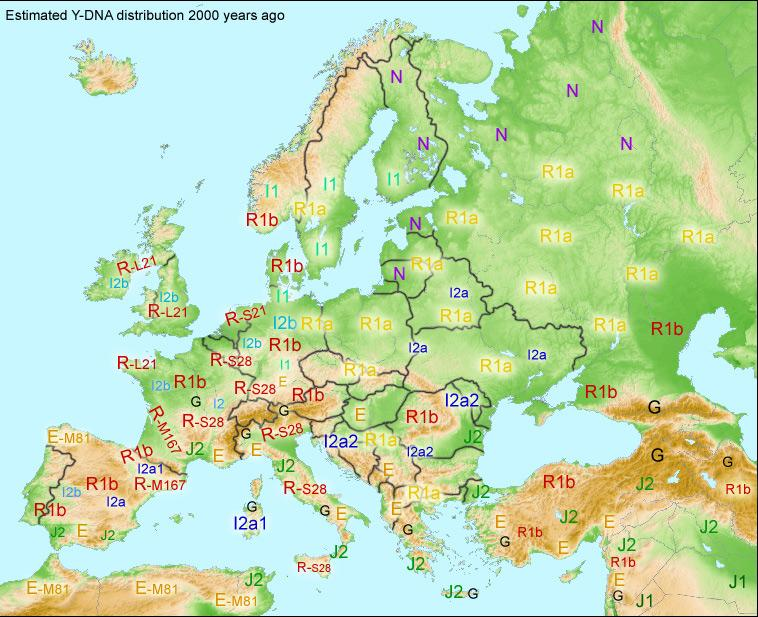

By Oskar Cvengros, translated by Slavik
We can learn who the Germans are in any lexicon or Encyclopedia. Germans take up a continuous area from the north to the centre or the Europe, they speak Germanic languages, which are related and they have entwined history. In the north, there are Norse, Swedish, Danish at their south, Flemish in the west, Austrian and partially Swiss in the south and in between there is the biggest nation of them – Germans.
Germania according to Tacitus in 1st century. Suebi takes up a large portion of Europe
The accepted opinion in academia is that ancestors of these Germans moved into southern Scandinavia around 2000 BC, from where they expanded to the Alps and along the side of Danube, later to Italy and Spain. In the 1st century AD, they have taken up relatively vast lands in Europe from north to the Danube and from Rhine to Black see. In the coming centuries, more lands all the way to Adriatic sea, Peloponnese and Adenine peninsula came under their command (Ostrogoth, later Langobards) and all Pyrenees peninsula (Visigoths and Suebi) and Northern Africa (Vandals). At the end 5th century and the beginning of 6th they all disappeared and in the heart of their territory Slavic people appear.
The region occupied by Slavic people from 6th – 9th century
Today, the biggest of Germanic tribes – the Germans, have their ancestry in the tribes that conquered Rome and many others, but their real origin is a little mysterious. Arabic historian Al-Masudi (cca 890 – 956) in his book Kitab at-tanhib va I-israf (The Book of Admonition and Revision), describes Germans as Slavic:
From the other big rivers we need to mention Danube, in the Slavic language called Morava. It is a big river, wide around 3 miles. The journey from Constantinople to its shores takes several days. On its shores there are settlements of Slavic Germans and Slavic Moravans. When Bulgari became Christians, they also settled around Danube.
In his other book The Meadows of Gold and Mines of Gems he writes about Slavs:
Then we need to mention Slavs whose name is Ustutrana (translated as Stodorana). Their ruler’s name is Basklabidz. Then the tribe of Dulaba (translated as Dudlebs), whose ruler today is Vandz-slaf (Vaclav I.; 926-935). Then the tribe Namadzin (Nemci = Germans) whose king is Garana. This tribe is the fastest and bravest of all Slavs…
Archaeological finds from eastern Germany as well as many topological names confirm the presence of Slavs. The Germans don’t dispute this presence, but document the establishment of bishops and archbishops dioceses on conquered Slavic lands: Hamburg, Bremen, Hildesheim, Halberstadt, Magdeburg in 968; Kolin, Mainz, Wurzburg, Bramerg in 1007, etc. In 983, under the rule of Oto the Great, a big Slavic uprising between the rivers of Elbe and Oder erupted, the Saxon’s lords were overthrown and religious organization’s buildings destroyed.
Anti Germanic uprisings of western Slavs are documented by German historians in other areas as well: Starigrad (today Oldenburg) 973, Lenzen 929, Havelberg 948, Merseburg 968, Brandenburg 948.
The current interpretation of word German in a brain child of Prussian philosopher Johan Gottfried von Herder (1744 – 1803) who divided Europe between Germans and Slavs. The theory about mass migration of tribes was fabricated, according to which, from the end of 4th century to the end of 6th, the Slavs had moved into their current homes in central and western Europe. It is well documented that in the 8th century Slavic tribes lived in the most parts of today’s Germany, eastern Austria, Czech, norther and southern Italy and from there to the east.
According to this theory, Slavic tribes in less than 200 years left their homes in marshes and inhabited half of the Europe, and no contemporary historian recorded this. They were able to accomplish this without quality weapons, warfare experience, because either one of them is hard to come by in the marshes.
There are several problems with this romantic idea of peaceful conquest of half of the Europe by non-violent peasants.
1. These lands were inhabited by mostly Germanic tribes, relatively in detail described by Greek and Roman historians and cartographers. They were accomplished craftsmen – manufacturing their own weapons and tools, building defence systems – a network of forts and their common culture bound with common language. The Slavs were able, according to this theory, to overcome these people not on individual basis but on mass scale to the point that these people lost their identity and took up the culture of Slavs. This could only happen if Slavs were aggressive invaders systematically murdering everybody or they were culturally superior, which cannot be said about inhabitants of swamps.
2. In 200 years the Slavs originating from beyond the shores of Vistula, conquered lands 2500 km to the west, south-west and south. More that 7 million square kilometres. They were apparently welcomed everywhere, their agricultural skills in high demand. Where did they learn this anyway if, for 200 years, they did nothing else but conquering other territories?
3. The Slavic takeover was so complete that all the original names of rivers, mountains and lands vanished, only the Slavic remained. The Germanic tribes were giving their towns and villages Slavic names several centuries before their invasion, which was documented in Ptolemy’s Geography in 200AD. He is describing many places in Germanic lands with Slavic names: Bogadion (town of god), Kalaigia (place of forging metal), Budoris (building), Menosgada (name of snake), Brodentia (Ford); there is no sign of Germanic dialects.
Still in the 16th century the image of Germania was different. We can see this from the work of Johannes Aventinus (1477-1534) Letopisy Bavorov IV, XX 13, where he writes regarding the arrival of Hungarians (lat. Ugros):
…they were wandering for 3 years in the eastern lands of Greater Germania and the land of the Sarmatians, they travelled among wild nations in the vast countryside and forests and sustained themselves by stealing and hunting. In their 4th year they were granted a permanent homes from Arnulf. Then they moved into Dacia the land that goes along the river Danube to the east, past river Tisza.
Aventinus is clearly describing lands past the Carpathian range as a territory of Greater Germania. In another of his texts he speaks of Dacia (today’s Romania) about which is said that “Dacia is still called Hungaria in Greater Germania”. This subtle note speaks of the fact that still in 16th century, in the times of Aventinus the term Greater Germania persisted. According to the accepted facts, the Slavic people lived in these lands for at least 1000 years. During that long of a time, the terms Germania and Greater Germania would have been lost unless the Germanic people still lived in this area and live there until this day.
Tacitus, in 1st century AD set Germania east of Rhine river and north of Danube. Considering the fact that no movement of Slavic people westward from the river Pripyat was recorded, we have to assume that the Germans lived in Germania also in there 6th century and live there today. Modern Germany, also called Germania in other languages, does not get its name because that is the only place where Germans live but because it has been a part of Greater Germania. In the 1st century, the Celtic tribes started to penetrate the area of modern Germany from the west, and later the Normans from the north. The proof that they still have not taken over all area until this day is a small but still existing community of Lusatias Serbs (today’s Germany) and Slavic names of many towns and villages.
Tacitus writes about these migratory waves of Celts to the east. He writes that Celts were crossing river Rhine and were penetrating Germania so that in his times we find tribes of Helvetii Boii, Treveri and Nerviis in the western Germania (today’s Germany). He writes that despite their Celtic origin they call themselves German. A second migratory wave leads to the south of Carpathian mountains, with Celtic tribes of Cotini and Ossi. These descriptions are in line with genetic studies of migratory waves of different groups.
For the group of genetic mutations found in the populations, a term ‘haplotype’ was created. The groups of similar haplotypes create haplogroups and these are derived from a common ancestor. In the field of genetic studies haplogroups of Y-chromosome and Mitochondrial DNA are studied. Y-DNA is transmitted by male descendants and it provides uninterrupted information about our parental line. mtDNA is inherited from mother’s side.
The science today can describe different mutations of the Y chromosome from people around the world. Based on the list of all known Y chromosome mutation, Y-Chromosome Consortium (YCC) established a system of labeling Y-DNA with letters from A to R and further division designated with small letters and numbers.
Distribution of Y-DNA of Slavic haplogroup R1a (understand Germanic) in EuroAsia
Based on the knowledge of Y-DNA we can picture an approximate scenario of past migrations. This scenario can be reconstructed using mtDNA as well (and the results are similar) but the analysis of Y-DNA is easier because the male population is more likely to replace the previous during migration.
Based on the big and ongoing research, there are two dominant Y-DNA lineages in Europe – R1a and R1b. These are very similar and come from a common ancestor who lived approximately 35 -40000 years ago. R1a is considered slightly older and is attributed to Slavic people, further it can be found in southern Norway, Central Asia (Kyrgizia), Iran, India and Sri Lanka. The generally accepted idea is that R1a was a dominant haplogroup among language groups of Indo-Europeans and they later developed into groups of Indo-Iranians, Mycenaean Greeks, Thrace, Baltic and Slavic people.
R1b is labelled as Kelto-Germanic and outside of vast representation in Western Europe, we can find it in western Asia, the Chinese province of Sin-tiang and northern Cameroon.
The transition area between these two dominant haplogroups in central Europe lies in today’s modern Germany and Austria. In eastern and northern parts of Germany, we can find 24% of R1a, R1b is more represented with 37%. In Austria R1a takes first place with 26% and R1b takes second with 23%.
Distribution of Celtic Y-DNA of R1b haplogroup in Europe
These genetic results generally correspond with archaeological finds and historical records. Relatively surprising is, however, a high occurrence of the Slavic haplogroup in Scandinavia because the historical sources (or the interpretation of) are quiet about the presence of Slavic people. In Norway’s population, the distribution of Y-DNA is comparable, R1a 25.5% and R1b 32%. In Sweden R1a takes third place, after the Nordic L1 37%, R1b 21.5% and R1a 16%. In both of these countries (and even in Iceland R1a 23%), the R1a has comparable or higher representation than in Bulgaria (17%) or Serbia (18%). So the question is: Where did the Slavs come from?
The distribution of Nordic Y-DNA L1 in Europe
Since we are talking here about the male Y-DNA, we can disregard the ideas of adventurous expeditions to rob the Slavs of their women. This means that approximately 30% of Scandinavia’s population was founded by males carrying R1a haplogroup. Sincere the is no mention of systematic conquering of Europe by Slavs, the conclusion is that Slavic people were probably the original population of Scandinavia. In other words, the carriers of R1a were people who the old historians called Germans.
Pages of Eupedia.com contain constantly updated results of genetic-geographic research of Europeans and regarding this theme we can find:
The first major expansion of R1a took place with the westward propagation of the Corded Ware (or Battle Axe) culture (2800-1800 BCE) from the northern forest-steppe in the Yamna homeland. This was the first wave of R1a into Europe, the one that brought the Z283subclade to Germany and the Netherlands, and Z284 to Scandinavia. The Corded Ware R1a people would have mixed with the pre-Germanic I1 and I2 aborigines, which resulted in the first Indo-European culture in Germany and Scandinavia, although that culture could not be considered Proto-Germanic – it was simply Proto-Indo-European at that stage, or perhaps or Proto-Balto-Slavic.
And
The late Unetice culture expanded to Scandinavia, founding the Nordic Bronze Age. R1a-L664 and R1b (L11 and U106) presumably reached Scandinavia at this time.
Here, the DNA study (Eupedia), comes into disagreement with historical documents, because according to those, there are no Slavic people in Scandinavia, there are (and were) only Germans. Are the historical documents lying? It is possible. The main reason is, however, misunderstanding who were Germans and what that word really meant. We can also find a hypothetical map of Y-DNA distribution from 2000 years ago on Eupedia.com. The map was constructed according to the current density of population and adjusted for migration in last 2000 years.
We can clearly see a strong representation of R1a in the southern Scandinavia, central Europe (Poland, Czech, Slovakia, eastern part of Germany), in the lands of today’s Serbia and Croatia, Macedonia and Trachia. There is no sign of settlers from Pripyat swamps, interestingly, the authors places haplogroup L2a into that region (according to the official version, this is the homeland of all Slavic people).
In the map, we can see a dominant position of Slavic R1a in the line of southern Scandinavia, Czech, Croatia, Serbia and northern Greece and from there to the east. If we follow logic and natural law, we can assume approximately equal distribution of density of R1a today as it was 2000 years ago and another 1000’s before, and it seems it was here before the R1b. If it is true that Slavic ancestors came to Europe from central Asia (region of Caspian sea is mentioned relatively often) then we can conclude they were here before the carriers of R1b, those who want to see us as immigrants from swamps and those who had taken the German for their own.

Hypothetical map of Y-DNA haplogroups distribution 2000 years ago. Only dominant haplogroups are shown. Haplogroups E and R1b include varioations. Large letters represent more than 25% of population, small letters indicate population of 10-25%.
To state that the Slavic people, carriers of haplogroup R1a, are descendants of a small group of humble farmers from marshes is not only a logical nonsense (farming and marshes don’t go well together) but also a big mistake on the part of historians who clearly have a political agenda. They have been proven very wrong by recent DNA studies and they should quickly change their tune because nobody will believe them in a short time.
 Subiecte similare
Subiecte similare» Latest genetic testing: “Jews” may be actually descended from Khazars
» King Bibi's dangerous legacy
» OPEN LETTER TO THE PEOPLE OF POLAND
» The People Who Were Burned to Ashes on Ash Wednesday
» There is a gap between the opinion of the people and the policy pursued by the elite
» King Bibi's dangerous legacy
» OPEN LETTER TO THE PEOPLE OF POLAND
» The People Who Were Burned to Ashes on Ash Wednesday
» There is a gap between the opinion of the people and the policy pursued by the elite
Pagina 1 din 1
Permisiunile acestui forum:
Nu puteti raspunde la subiectele acestui forum|
|
|

